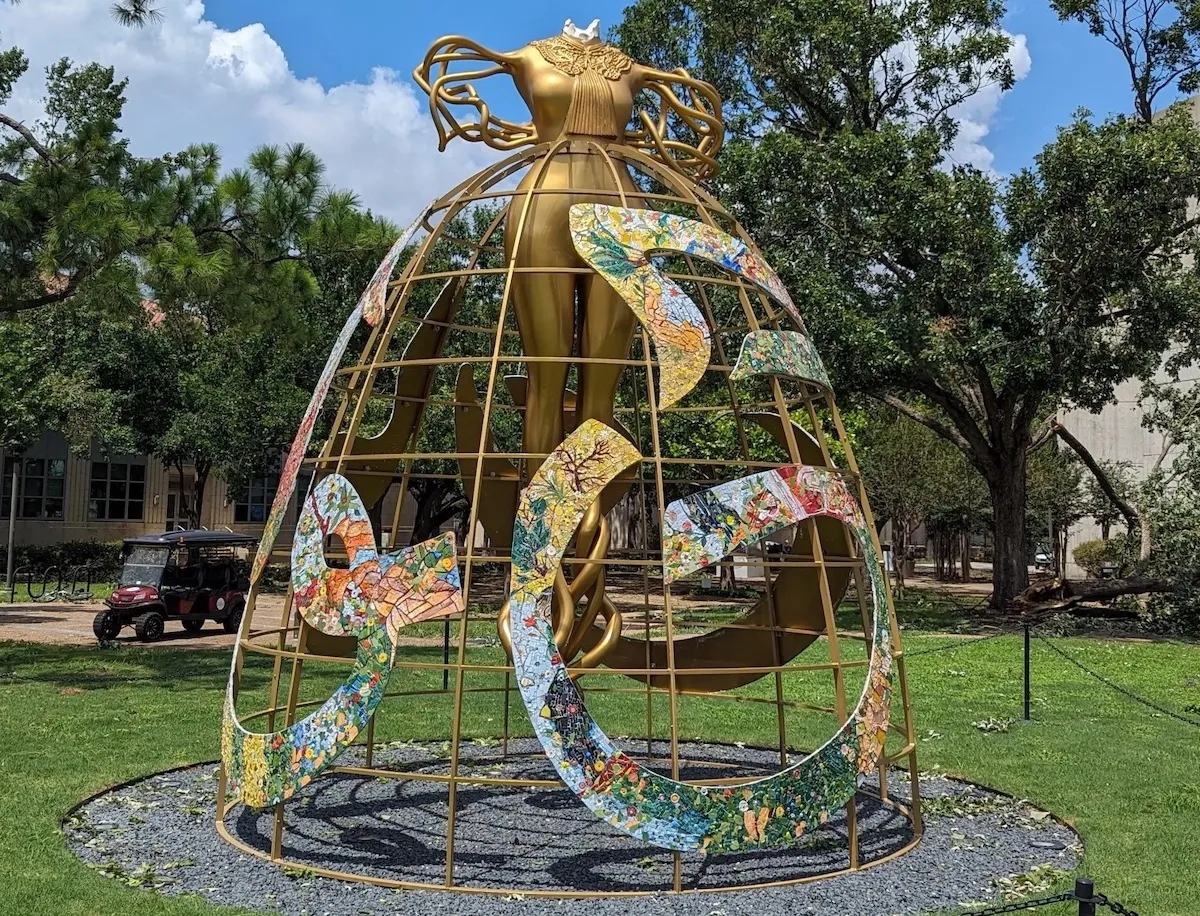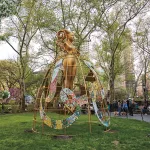
After a Shahzia Sikander sculpture was beheaded in Houston, Texas, the artist said this week she would not repair it, explaining that the work in its current form speaks to what she called “the hatred and division that permeate our society.”
Although Sikander had previously stated that she planned to leave the sculpture as is, she addressed her decision at length on Tuesday in a Washington Post op-ed. She once again called on the work’s exhibitor, the University of Houston, to make another statement about the beheading and speculated that the decapitators may have thought they could get away with their act because of a hurricane that blew through Texas at the time.
The sculpture, titled Witness (2023), faced pushback from anti-abortion groups earlier this year, with one claiming that the work promoted “satanic” imagery because it alluded to horned beings associated with Abrahamic religions. But, Sikander told Art in America earlier this year, “There is nothing Satanic about them.”
Sikander previously said that her female figure, who has two spiraling braids, was meant as a tribute to the “spirit and grit” of “women who have been collectively fighting for their right to their own bodies over generations,” particularly in the wake of a 2022 Supreme Court decision that severely curtailed abortion rights in the US.
In July, Witness was beheaded at the University of Houston. Video footage of the beheading showed that the event took place in the middle of the night, during Hurricane Beryl.
“When we are witnessing a regression of women’s rights around the world, especially in the United States, art can function as a vehicle of defiance,” Sikander wrote in the Washington Post this week. “It can also be a path toward rectification. It’s clear to me that the people opposed to the statue object to its message of women’s power.”
Noting that “art to cultivate imagination, build empathy, bridge political divides and further our common humanity,” Sikander concluded, “We should leave the statue the way it is: a testament to the hatred and division that permeate our society.”
